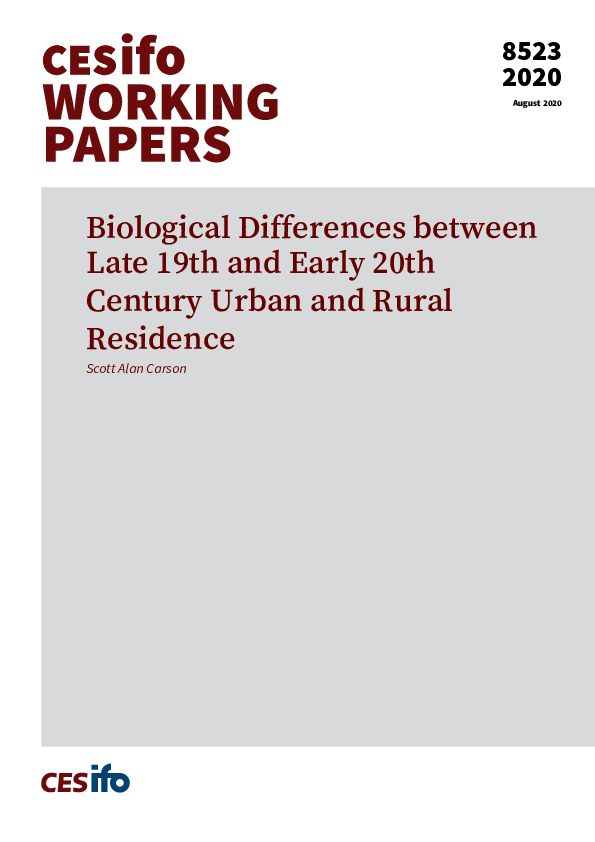Biological Differences between Late 19th and Early 20th Century Urban and Rural Residence
CESifo, Munich, 2020
CESifo Working Paper No. 8523

Communities urbanize when the net benefits to urbanization exceed rural areas. Body mass, height, and weight are biological welfare measures that reflect the net difference between calories consumed and calories required for work and to withstand the physical environment. Across the United States, 19th century urban heights and weights were lower than their rural counterparts, while urban BMIs were higher. However, as the ratio of weight to height, higher urban BMIs reflect shorter urban statures, indicating there was a willingness-to-accept poorer cumulative urban health and net nutrition in exchange for urban economic opportunity. Over the late 19th and early 20th centuries, urban and rural BMIs, height, and weight were constant, and rural farmers had greater BMIs, taller statures, and heavier weights than urban farmers and workers in other occupations.
Social Protection
Labour Markets